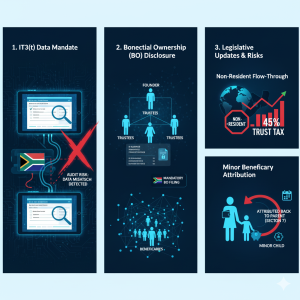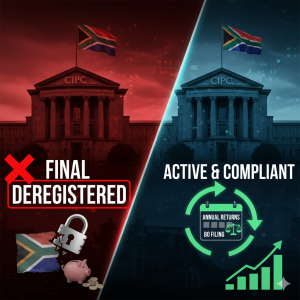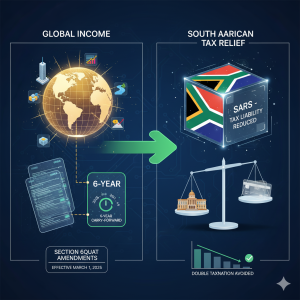SARS Intensifies Trust Scrutiny—Are Your Trustees Prepared?

The South African Revenue Service (SARS) has fundamentally changed the compliance landscape for all trusts. The latest revisions to the ITR12T (Trust Income Tax Return) and related legislation signal that SARS is moving toward full transparency, demanding granular detail on trust structures, distributions, and beneficiaries.
Trustees can no longer afford a passive approach; non-compliance is being flagged faster than ever, leading to immediate audits and severe penalties.
- New Compliance Cornerstone: The IT3(t) Data Mandate
The IT3(t) (Third-Party Data Return for Trusts) is now the most critical piece of the trust compliance puzzle, moving from an administrative task to a mandatory compliance check integrated directly into the tax return.
- ITR12T Integration: The Trust Income Tax Return (ITR12T) now includes a mandatory confirmation question: “Did the Trust submit an IT3(t) return?” Failure to confirm submission will halt the filing process and trigger a non-compliance flag.
- Automated Cross-Validation: SARS uses the IT3(t) data—which reports all amounts vested in beneficiaries (income, capital gains, and capital)—to directly pre-populate beneficiaries’ individual tax returns.
- The Mismatch Risk: Any discrepancy between the amounts reported by the trust on the IT3(t) and the amounts declared by the beneficiary will be instantly visible to SARS’ automated systems, virtually guaranteeing an audit or investigation.
- Full Transparency: The Beneficial Ownership Disclosure
In line with international Financial Action Task Force (FATF) requirements, SARS is aggressively enforcing beneficial ownership (BO) disclosure to combat illicit financial flows.
- Mandatory Detail: Trustees must provide extensive personal details, including the South African ID number, for every natural person who qualifies as a Beneficial Owner.
- Broad Definition: A BO includes the Founder/Settlor, all Trustees, and all Identifiable Beneficiaries (even those who have not yet received a benefit).
- Supporting Documents Required: The ITR12T mandates the upload of documents (such as an organogram or spreadsheet) that clearly depict the BO structure and control hierarchy.
- Trustee Liability: Non-disclosure of BO information to both SARS and the Master of the High Court can lead to significant financial penalties and potential criminal sanctions for the trustees personally.
- Legislative Updates Restricting Tax Planning
Recent legislative changes have further tightened the net, targeting structures that previously offered tax efficiencies.
- Restriction on Flow-Through for Non-Residents
The long-standing flow-through principle, where income distributed to a beneficiary retains its nature, is now limited to South African resident beneficiaries only.
- Impact: Income and capital gains vested in non-resident beneficiaries are now taxed within the trust itself at the highest flat rates (45% for income; 36% effective rate for capital gains).
- Compliance Need: Trusts with non-resident beneficiaries must ensure they meet all provisional tax obligations and re-evaluate their distribution strategies.
- Attribution Rules and Minor Beneficiaries
The Donor Attribution Rules (Section 7 and Paragraph 69) remain a high-risk area.
- Risk: Income or capital gains stemming from assets donated by a parent to a trust that are vested in their minor child are attributed back to the parent and taxed at the parent’s marginal rate.
- The Cross-Check: The integration of the IT3(t) makes it simple for SARS to cross-check distributions to minors against the parent’s tax return, instantly highlighting any failures to apply these complex attribution calculations.
Immediate Action for Trustees
The time for a reactive approach is over. Trustees must proactively ensure their trust administration is watertight to avoid triggering a SARS audit.
- Verify Beneficial Ownership: Ensure all BO details are current, accurate, and fully documented before filing.
- Align IT3(t) and ITR12T: Confirm that the vesting decisions and amounts reported on the IT3(t) are 100% consistent with the ITR12T and the beneficiaries’ expected tax declarations.
Review Distribution Strategy: If the trust has non-resident beneficiaries or distributes to minors, urgently review the strategy to ensure compliance with the new limitations and the strict attribution rules.








